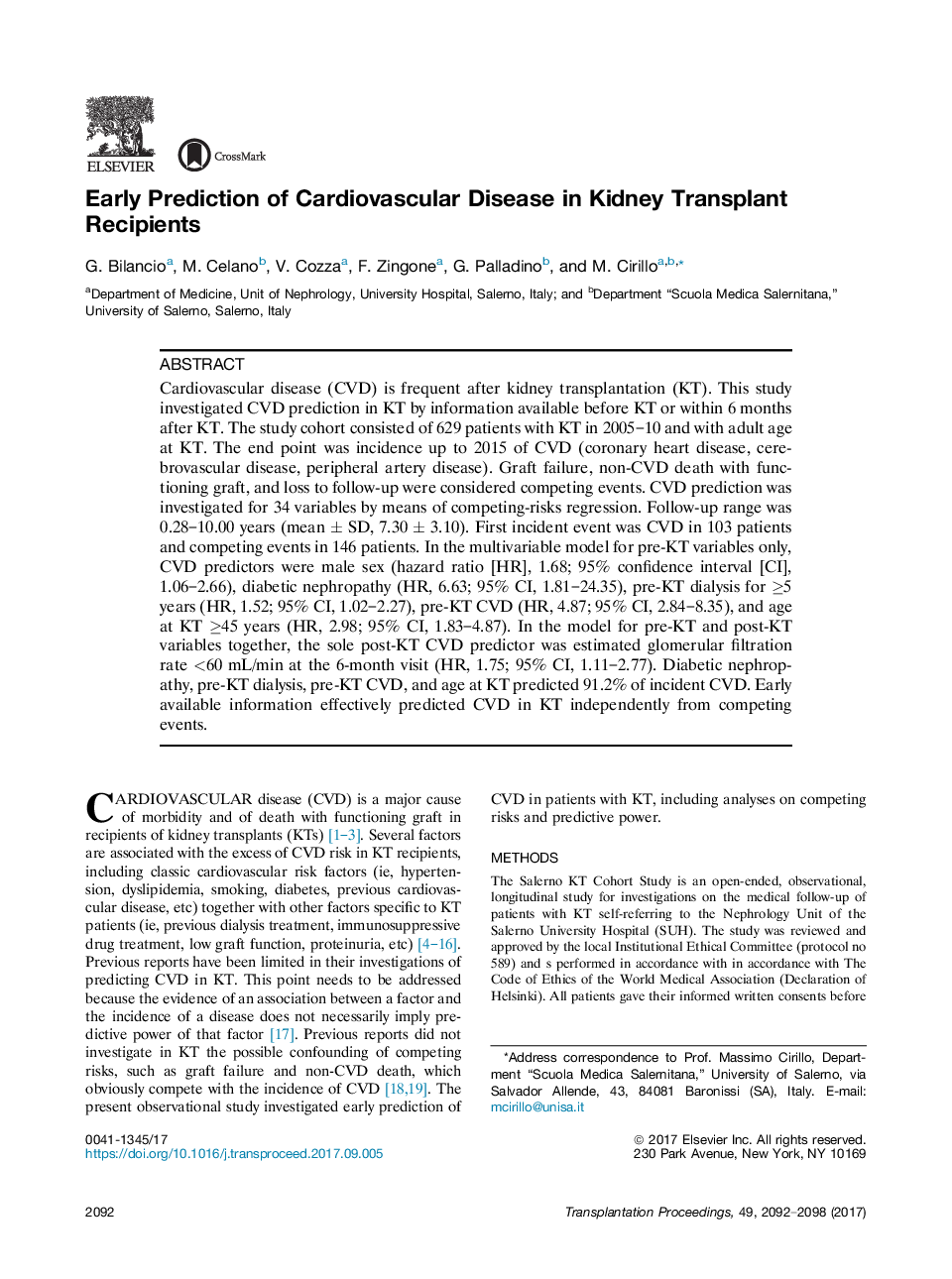| Article ID | Journal | Published Year | Pages | File Type |
|---|---|---|---|---|
| 8827550 | Transplantation Proceedings | 2017 | 7 Pages |
Abstract
Cardiovascular disease (CVD) is frequent after kidney transplantation (KT). This study investigated CVD prediction in KT by information available before KT or within 6 months after KT. The study cohort consisted of 629 patients with KT in 2005-10 and with adult age at KT. The end point was incidence up to 2015 of CVD (coronary heart disease, cerebrovascular disease, peripheral artery disease). Graft failure, non-CVD death with functioning graft, and loss to follow-up were considered competing events. CVD prediction was investigated for 34 variables by means of competing-risks regression. Follow-up range was 0.28-10.00 years (mean ± SD, 7.30 ± 3.10). First incident event was CVD in 103 patients and competing events in 146 patients. In the multivariable model for pre-KT variables only, CVD predictors were male sex (hazard ratio [HR], 1.68; 95% confidence interval [CI], 1.06-2.66), diabetic nephropathy (HR, 6.63; 95% CI, 1.81-24.35), pre-KT dialysis for â¥5 years (HR, 1.52; 95% CI, 1.02-2.27), pre-KT CVD (HR, 4.87; 95% CI, 2.84-8.35), and age at KT â¥45 years (HR, 2.98; 95% CI, 1.83-4.87). In the model for pre-KT and post-KT variables together, the sole post-KT CVD predictor was estimated glomerular filtration rate <60 mL/min at the 6-month visit (HR, 1.75; 95% CI, 1.11-2.77). Diabetic nephropathy, pre-KT dialysis, pre-KT CVD, and age at KT predicted 91.2% of incident CVD. Early available information effectively predicted CVD in KT independently from competing events.
Related Topics
Health Sciences
Medicine and Dentistry
Surgery
Authors
G. Bilancio, M. Celano, V. Cozza, F. Zingone, G. Palladino, M. Cirillo,
